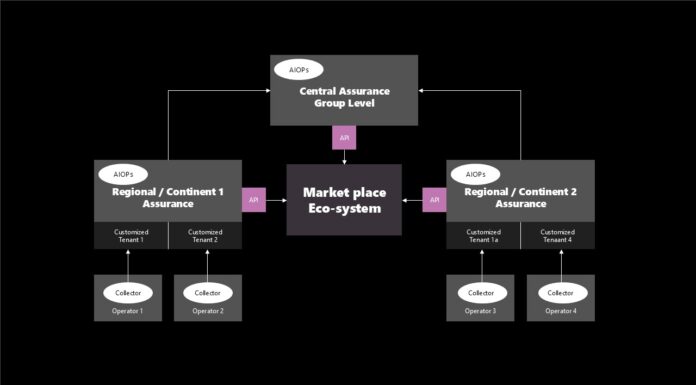Assurance solutions are becoming critical to support the growing need for higher-quality, reliable and more consistent network services
2025 holds much hope for the telecom industry, with operators standing at the forefront of the digital revolution. This offers a tremendous opportunity as we see a proliferation of IoT devices, generative AI integration, rapid growth of video content and new enhanced mobile devices. On the other hand, telecom operators, moving to 5G standalone (SA) and 5G-Advanced will also be faced with deployment complexity, liable to affect service quality, customer experience and operational costs.
With data expected to rise from 3.4 million petabytes in 2022 to an expected 9.7 million petabytes by 2027, operators will need to rethink their strategies to cater to the expected growing subscriber base. The existing legacy technologies limit scalability, causing operators to struggle to adapt to large diverse needs and presents potential challenges in interoperability and inconsistent performance.
Sharing the burden
A problem shared is a problem halved. This applies to telecom as much as anything else. An IDC report shows that sharing services boosts efficiency, reduces costs and standardizes processes across the organization. Tower sharing or infrastructure sharing is already prevalent among operators looking to optimize operations and save costs. There is also interest in sharing network infrastructure in the core and radio as well, owing to the complexity of technology which is continuing to escalate. With the transition to the cloud, the next logical step will be the implementation of assurance sharing across different operating companies (op-cos).
Unified assurance hub
A centralized assurance platform, or an Assurance Hub offers global operators the opportunity to “share” assurance on a single platform – saving costs and reducing complexity, particularly across multiple op-cos. Using cloud technologies to deploy infrastructure dependencies, a unified hub hosts all assurance requirements, supports multi-tenancy and allows sharing amongst op-co private network assurance solutions.
Many operators and their various op-cos are spread throughout different locations, making an Assurance Hub effective for governance within multiple clouds and networks. Integrating all assurance services under “one roof” allows centralized and shared resources. It accelerates automation and optimization and enables further efficiency within the organization. It offers a “one-click” approach for seamless activation of assurance features, significantly simplifying deployment over multiple regions while maintaining data integrity and security.
Automated service assurance solutions are designed to sustain millions of connected devices. They offer data in user analytics, location intelligence, usage patterns and service interactions for continuous monitoring and identifying of trends and preventing potential faults and service quality issues.
No need to reinvent the wheel
Cloud-based, on private, public or hybrid cloud environments, Service Assurance Hubs consolidate backend solutions in a SaaS or group-level platform, providing a one-click feature activation for each op-co. The unique multi-tenancy architecture offers customized workflows and enhanced coordination across systems. Key compliancy and privacy requirements are fully incorporated, designed with privileged-based, user profile access and controls security and sensitive information.
The front-end setup, which is lightweight and uses minimal resources, is simplified and seamlessly integrated near the edge network. Each op-co is required to install a data collection function (DCF), which streams call detail records (CDRs) directly to a centralized hub. Packet data is kept at the front-end which minimizes data transfer to the backend, reducing bandwidth requirements significantly.
An open ecosystem architecture enhances coordination across different systems. It ensures integration with other vendors such as ticketing systems, performance management, fault management systems and facilitates easier and faster updates. Multi-geographical deployment options also allow specific parts to be tailored for each op-co, providing an additional layer of customization and privacy.
Assurance hubs integrate artificial intelligence and machine learning for group-level intelligence and cross-op-co insights. These insights could include performance trends, KPIs across regions and networks, and root cause analysis. Driven by AI, these Assurance Hubs minimize errors, ensuring routine tasks are automated and allow engineers to focus their time on value-added activities.
Core value
The drive for advanced services on sophisticated technologies, with higher network speeds, means that telecom operators will need to improve their capabilities to meet the changing subscriber expectations. Assurance solutions are becoming critical to support the growing need for higher-quality, reliable and more consistent network services. A unified, centralized “sharing” approach to service assurance, tailored for telecom groups, facilitates this high quality, scalable and flexible delivery of sophisticated capabilities, while decreasing operational costs, and increasing efficiencies.

